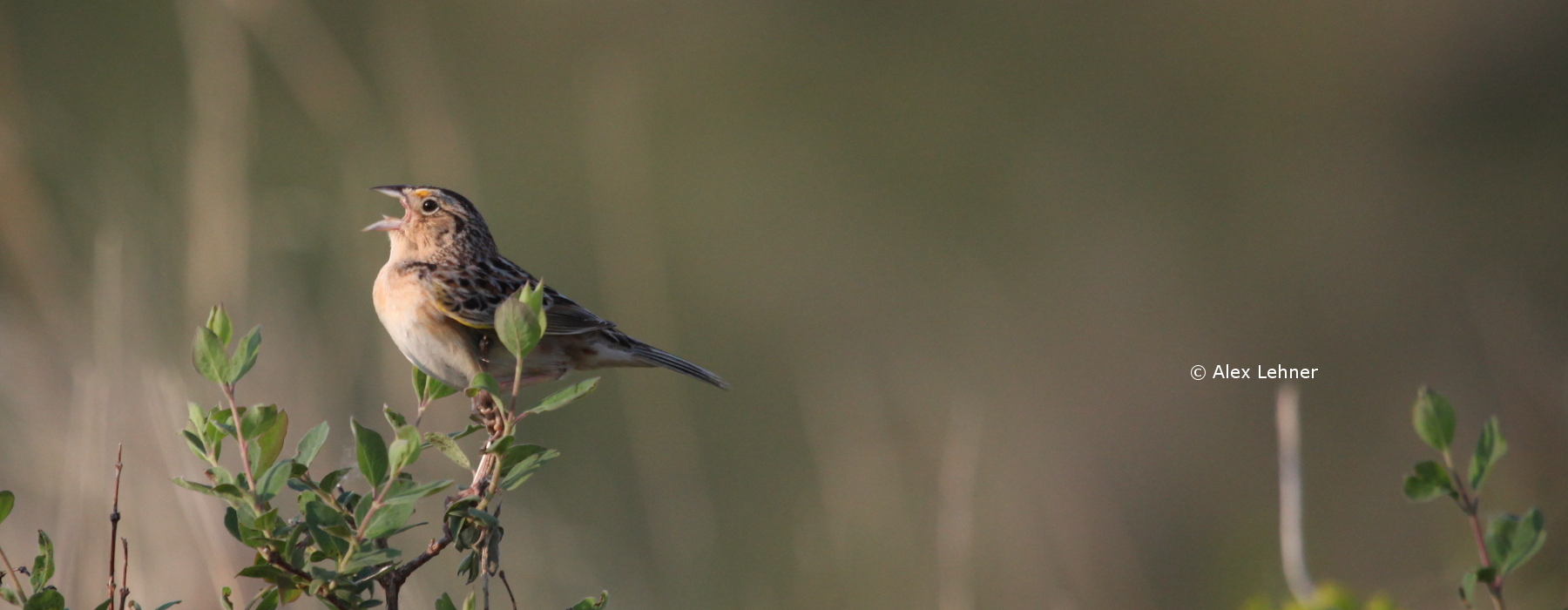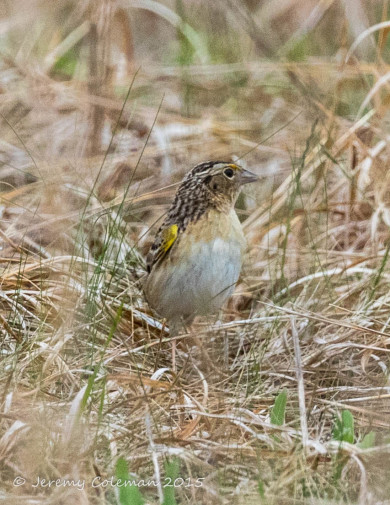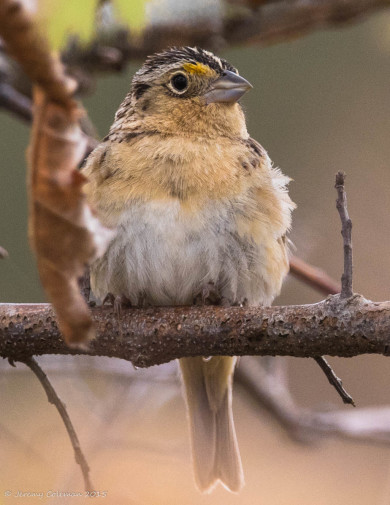One of our rarest regular birds in Vermont, the Grasshopper Sparrow (Ammodramus savannarum) is a small and elusive bird that spends most of its time running on the ground, rather than flying. In fact the genus, Ammodramus, means “sand runner” in Latin.
Unless you have visited Franklin County State Airport (NE of Swanton, VT), then chances are you have yet to see this species in Vermont. Grasshopper Sparrows are also occasionally reported from elsewhere in the Champlain Valley, and a few very small populations may occur within the Connecticut River Valley.
In New England Grasshopper Sparrows are often found in large and open grass-dominated fields with few shrubs, such as those found on airfields and military bases (e.g., Joint Base Cape Cod and Westover Airforce Base in Massachusetts). Despite their breeding range across the U.S. (from coastal California to New England) we still do not fully understand their migratory and non-breeding movements, or to what degree breeding populations of Grasshopper Sparrows are connected. For example, do Grasshopper Sparrows breeding in Massachusetts and Maryland follow the same migration routes, and do they spend the winter in the same places? Finding Grasshopper Sparrows during the breeding season can be challenging enough, but how do you follow a 17-gram bird from New England to its wintering grounds and back again?
VCE is partnering with the Department of Defense (DoD) Legacy Program to help answer those questions using sophisticated light-level geolocators: tiny devices that track an individual bird’s location using day length and sunrise and sunset times. In 2015 VCE deployed 180 geolocators onto Grasshopper Sparrows at a total of six DoD installations, and in 2016 we recovered 35 of these geolocators with data that tell us their movements off of the breeding grounds. Read more about that project (here) and a recap of our 2015 research efforts (here).
Natural History
Grasshopper Sparrows are ground-foraging insectivorous species during the breeding season, and yes, they do eat grasshoppers—usually after removing the grasshopper’s wings, legs, and heads. In the winter, however, Grasshopper Sparrows primarily switch to eating grass and sedge seeds. Grasshopper Sparrows were named after their insect-like song, however, and not their dietary habits. Both sexes generally fly close to the ground (below 2 m), and males often weakly “flutter-fly” between perches: the purpose of this flutter-flight is unclear, but it is likely involved in mate-advertisement.
Grasshopper Sparrows are mono-chromatic: males and females cannot be distinguished based on plumage alone, but behavior is a good clue to their sex. Only male Grasshopper Sparrows sing (usually from exposed perches), and males have two very different song types that are used for mate attraction and territorial defense. The second song’s excited bubbly trill is almost reminiscent of a very weak Winter Wren. Males can be aggressive—chasing other males, other bird species, and potential mates around the grassland. From VCE’s Jason Hill’s research with color-banded males and females we know that most observations of non-singing birds are males, too. So where are the females?! Females are cryptic, and spend most of their time on the nest or finding food on the ground. If you see two Grasshopper Sparrows perched together, chipping at you, then you have likely encountered an agitated mating pair who are asking you to move away from their nest. If you are walking through a grassland (the best way to see grassland birds!) and a bird appears to fly up from between your feet then you have found a nest and a female. Females will generally only fly ~5-10 m at the most before “plopping” back into the grass where they will then run away from you.
Conservation Actions
Like most species of North American grassland birds, Grasshopper Sparrows have substantially declined throughout their range over the last 50 years. These declines are likely tied directly to grassland loss through agricultural conversion and through the intensification of agricultural practices (read more here)—including on their migration and wintering grounds.
Conserving Grasshopper Sparrow populations will likely require preserving the remaining large tracts of open grasslands throughout the U.S. and Mexico. Grasshopper Sparrows are incredible dispersers, and we know that they readily find patches of new grasslands (even in the middle of the woods). Grasslands are fire-prone ecosystems, and this dispersal ability likely served them well on the Great Plains when fires and herds of American Bison denuded large areas of grass. Their dispersal ability makes it likely that Grasshopper Sparrows will find and colonize newly-restored patches of grasslands, so reclaiming large patches of marginal agricultural lands back to grasslands may also be a key component in the restoration of Grasshopper Sparrow populations.
If you want to do something to promote our understanding of Grasshopper Sparrow populations then drive south this winter (e.g., Texas or Mexico) and look for grassland birds–then submit your data to eBird. Check out this interactive map from eBird. Notice how Grasshopper Sparrows “disappear” from the southern U.S. in September? The birds are still there in Texas and along the Gulf Coast states–there just are not many birders looking for them.



